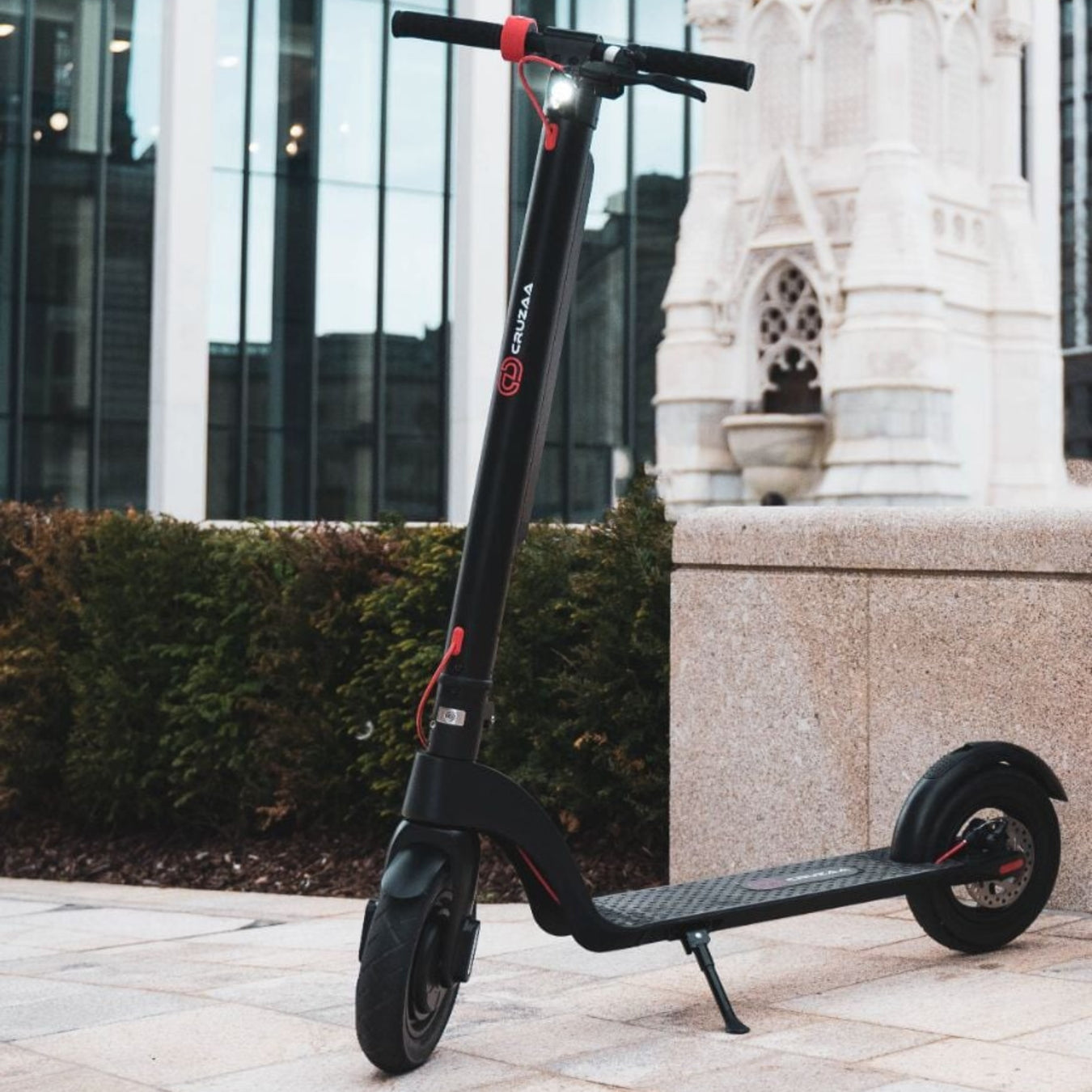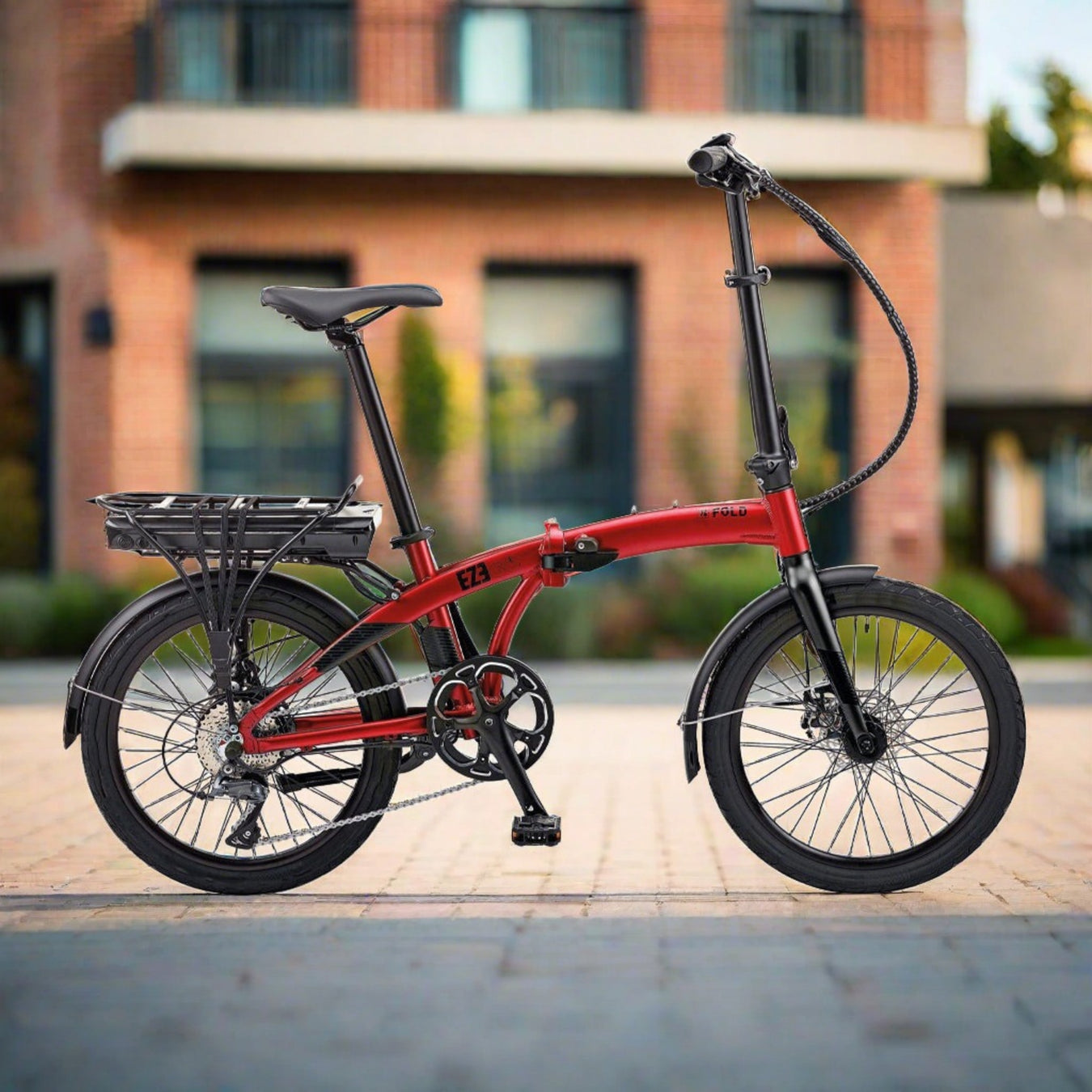Available Mon-Sun

The Ultimate Guide To Buying An Electric Bike
Electric bikes, also known as e-bikes, are becoming increasingly popular among commuters and recreational riders alike. If you're new to the world of e-bikes, here is the ultimate guide to help you get started:
-
What is an electric bike? An electric bike is a bicycle that is equipped with a motor and a battery that provides pedal assistance. The motor provides extra power when you pedal, making it easier to ride uphill and over long distances.
-
How does an electric bike work? The motor on an e-bike is activated when you start pedaling, and the amount of assistance provided can be adjusted using a control panel. The battery provides power to the motor, and can be recharged by plugging it into a power source.
-
Types of e-bikes: There are several types of e-bikes available, including city bikes, mountain bikes, and road bikes. Each type is designed for a specific type of riding, so it's important to choose the right type of e-bike for your needs.
-
Benefits of e-bikes: E-bikes offer several benefits, including increased speed, range, and accessibility, making them an ideal choice for commuters and recreational riders alike. They are also environmentally friendly and can save you money on transportation costs.
-
Choosing an e-bike: When choosing an e-bike, consider factors such as the motor, battery, frame, suspension, brakes, tires, price, and size and fit. Choose an e-bike that meets your specific needs and budget.
-
Safety: As with any type of bike, safety should be a top priority when riding an e-bike. Wear a helmet, follow traffic laws, and be aware of your surroundings at all times.
-
Maintenance: E-bikes require regular maintenance, including checking the battery, cleaning the chain, and keeping the tires properly inflated. Follow the manufacturer's instructions for maintenance and seek professional help if needed.
What is an electric bike?
An electric bike, also known as an e-bike, in the UK is a bicycle that is equipped with a motor and battery that provides pedal assistance. The motor provides extra power when you pedal, making it easier to ride uphill and over long distances. In the UK, e-bikes are classified as Electrically Assisted Pedal Cycles (EAPCs) and must meet certain requirements to be road-legal. These requirements include a maximum power output of 250 watts, a maximum assisted speed of 15.5 mph, and the requirement that the motor only provides assistance when the rider is pedaling. E-bikes in the UK can be used on public roads, cycle paths, and other designated cycle routes, but cannot be ridden on footpaths or bridleways.
How does an electric bike work?
An electric bike, or e-bike, works by providing pedal assistance through a motor and battery. The motor is typically located in the bike's hub, crankset, or mid-drive unit and is activated when the rider begins pedaling. The motor provides additional power to the pedals, making it easier to ride uphill and over long distances. The amount of assistance provided by the motor can be adjusted through a control panel located on the handlebars.
The battery provides power to the motor and can typically be recharged by plugging it into a power source. Most e-bikes use lithium-ion batteries, which are lightweight and have a long lifespan. The range of an e-bike depends on the capacity of the battery and the level of assistance provided by the motor. Some e-bikes have a range of up to 100 miles on a single charge.
E-bikes also typically have sensors that detect the amount of force applied to the pedals and adjust the motor assistance accordingly. This allows the rider to maintain a consistent level of effort and speed regardless of the terrain.
What are the different types of e-bikes?
There are several types of e-bikes available, each designed for a specific type of riding. Here are some of the most common types of e-bikes:
-
City e-bikes: These are designed for commuting and urban riding, with features like mudguards, lights, and racks. They typically have a more upright riding position and smaller wheels for agility in city traffic.
-
Mountain e-bikes: These are designed for off-road riding and have features like suspension, knobby tires, and wider handlebars for better control on rough terrain.
-
Road e-bikes: These are designed for high-speed riding on paved roads and have features like drop handlebars, narrow tires, and lightweight frames for efficiency.
-
Folding e-bikes: These are designed for easy transport and storage, with frames that fold down to a compact size. They are ideal for commuters who need to take their bike on public transportation or store it in a small apartment.
-
Cargo e-bikes: These are designed for carrying heavy loads, with features like large racks and baskets. They are ideal for running errands or hauling groceries.
-
Recumbent e-bikes: These have a reclined riding position and are designed for riders who prefer a more laid-back riding experience.
-
Tandem e-bikes: These are designed for two riders, with features like a longer frame and two sets of pedals. They are ideal for couples or families who want to ride together.
Each type of e-bike has its own unique features and benefits, so it's important to choose the right type of e-bike for your specific needs and riding style.
What are the benefits of e-bikes?
There are several benefits of e-bikes, including:
-
Pedal assistance: E-bikes provide pedal assistance, making it easier to ride uphill or over long distances. This can encourage more people to start cycling or to cycle more frequently, as they can enjoy the benefits of cycling without the physical exertion.
-
Eco-friendly: E-bikes are eco-friendly, as they produce no emissions and have a smaller carbon footprint compared to cars or motorcycles.
-
Cost-effective: E-bikes are cost-effective, as they require less maintenance and are cheaper to operate compared to cars or motorcycles. They can also be a more affordable alternative to public transportation or owning a car.
-
Faster travel: E-bikes can help you travel faster compared to traditional bicycles, as the motor provides extra power to the pedals. This can be particularly useful for commuters or for running errands.
-
Improved health: While e-bikes provide pedal assistance, they still require physical activity and can help improve your fitness levels. They can also be a good option for people with mobility issues or injuries, as they provide a low-impact exercise option.
What to consider when buying an e-bike?
When buying an e-bike, here are some important factors to consider:
-
Riding style: Consider what type of riding you'll be doing, whether it's commuting, leisurely rides, off-road adventures, or something else. Choose an e-bike that's designed for your intended use.
-
Motor and battery: The motor and battery are the most important components of an e-bike. Look for a motor with enough power for your needs and a battery with sufficient capacity for the range you require. Also consider the location of the motor and battery on the bike, as this can affect handling and weight distribution.
-
Frame and components: Look for a sturdy frame that's designed for the type of riding you'll be doing. Consider the quality of the components, such as brakes, gears, and suspension, as well as the overall weight of the bike.
-
Comfort and fit: Make sure the e-bike is comfortable and fits you well. Look for features like adjustable handlebars and saddle height to ensure a comfortable riding position.
-
Price: E-bikes can range in price from a few hundred to several thousand pounds. Consider your budget and look for an e-bike that offers good value for your money.
-
Legal requirements: In the UK, e-bikes are subject to certain legal requirements, including a maximum power output of 250 watts and a maximum assisted speed of 15.5 mph. Make sure the e-bike you're considering meets these requirements.
-
Warranty and after-sales support: Look for a reputable brand that offers a warranty and good after-sales support. This will ensure that you can get help if you experience any issues with your e-bike.
By considering these factors, you can choose an e-bike that's right for your needs and provides a safe, comfortable, and enjoyable riding experience.
In conclusion, buying an electric bike can be a great investment for anyone who wants to enjoy the benefits of cycling with the added convenience of a motor. By considering factors such as riding style, motor and battery, frame and components, comfort and fit, price, legal requirements, and warranty and after-sales support, you can choose an e-bike that's right for your needs and provides a safe, comfortable, and enjoyable riding experience. Whether you're commuting to work, running errands, or enjoying leisurely rides, an e-bike can be a fun, eco-friendly, and cost-effective way to get around. With the right e-bike, you can experience the joys of cycling with the added convenience and assistance of a motor.






